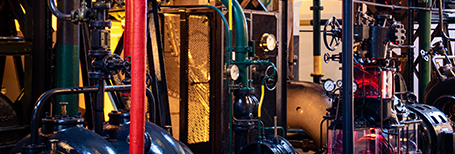
in 1999, the european union issued council directive 1999/36/ec of 29 april on transportable pressure equipment (tped). seen from the development history of pressure equipment, this directive is the first law that separates transportable pressure equipment from dangerous goods transportation regulations. this regulation applies to transportable pressure equipment (tped) for road and rail transport of dangerous goods in the eu, including new and in use, repeatedly filled and regularly inspected pressure equipment. tped is under the framework of eu ce certification, that is to say, tped certification is the ce certification of transportable pressure equipment. this regulation is applicable to the type approval evaluation, manufacturing supervision, initial and periodic inspection, conformity re-evaluation and internal inspection service supervision of transportable pressure equipment and vessels.
in june 2010, the european union officially issued the new transportable pressure vessel tped 2010/35/eu, replacing the original tped 1999/36/ec. the transportable pressure equipment directive (2010/35/eu) replaces the respective access systems of the original member states with a unified certification scheme, and puts forward requirements for the design, manufacture and conformity assessment of transportable pressure equipment, which is applicable to all eu member states. transportable pressure equipment sold in the eu market shall obtain ce - π mark according to the requirements of tped.
1.all vessels
cylinders, tubes, pressure tanks, cryogenic vessels, cylinder packs / bundles as specified in annex a of directive 94/55/ec.
2.all tanks
including removable tanks, tank containers (mobile tanks), tanks for tank cars, tanks or vessels for battery locomotives / trucks, and tanks for tank cars (used for the transportation of class 2 gases according to directive 94/55/ec and directive 96/49/ec annexes, as well as the transportation of certain other dangerous substances according to annex vi of this directive, including valves and other accessories used in transportation).
the above definition does not include the equipment applicable to the small quantity exemption, and the equipment specially specified in annexes 94/55/ec and 96/49/ec, as well as the aerosol spray tank (un1950) and the high-pressure air cylinder of breathing apparatus.
ce certification provides a unified technical specification for products of various countries to trade in the european market and simplifies the trade procedures. any country's products must be ce certified and affixed with ce mark before entering the eu and the european free trade area. therefore, ce certification is the passport for products to enter the markets of eu and european free trade area countries. ce certification means that the products have met the safety requirements specified in the eu directives. it is a commitment of enterprises to consumers, which increases consumers' trust in the products. products with ce marks will reduce the risk of sales in the european market.
it is applicable to all kinds of mobile pressure equipment, including steel cylinders, lpg cylinders, road and railway tank cars, mobile pressure equipment valves, safety valves, etc. the specific classification is as follows:
(1) all vessels (cylinders, tubes, pressure tanks, cryogenic vessels, cylinder packs / bundles, etc. as specified in annex a of directive 94/55/ec);
(2) all tanks, including removable tanks, tank containers (mobile tanks), tanks for tank cars, tanks or containers for battery locomotives / trucks, tanks for tank cars (used for the transportation of class 2 gases according to directive 94/55/ec and directive 96/49/ec annexes, and the transportation of certain other dangerous substances according to annex vi of this directive, including valves and other accessories used in transportation) the above definitions do not include equipment applicable to small quantity exemption, and the equipment specially specified in annexes 94/55/ec and 96/49/ec, as well as aerosol spray cans (un1950) and high-pressure air cylinders of breathing appliances;
(3) transportable pressure equipment: i.e. all vessels (cylinders, tubes, pressure discs, cryogenic vessels, cylinder groups defined in annex a of directive 94/55/ec).
institutions that can conduct ped certification shall meet the following requirements:
(1) it is an notified body of the european union. at present, there are nearly 2800 notified body in the european union, which can be queried on the official website of the european union;
(2) authorized by tped instruction. because the scope of certification services provided by different notified body is different, it must be determined that they have the authorization of tped before they can provide tped certification services.
(1) comprehensively understand the parameters of the products to be applied for tped certification, determine the risk level of the tped equipment, and select the qualified certification modules accordingly;
(2) contact a qualified tped certification authority to apply;
(3) prepare documents required for certification, prepare on-site audit (factory production control needs to be audited for some modules), etc;
(4) rectification and submission of nonconformities;
(5) issue certificate.






tel: 86-400 821 5138
fax: 86-21 3327 5843
email:noa@noagroup.com